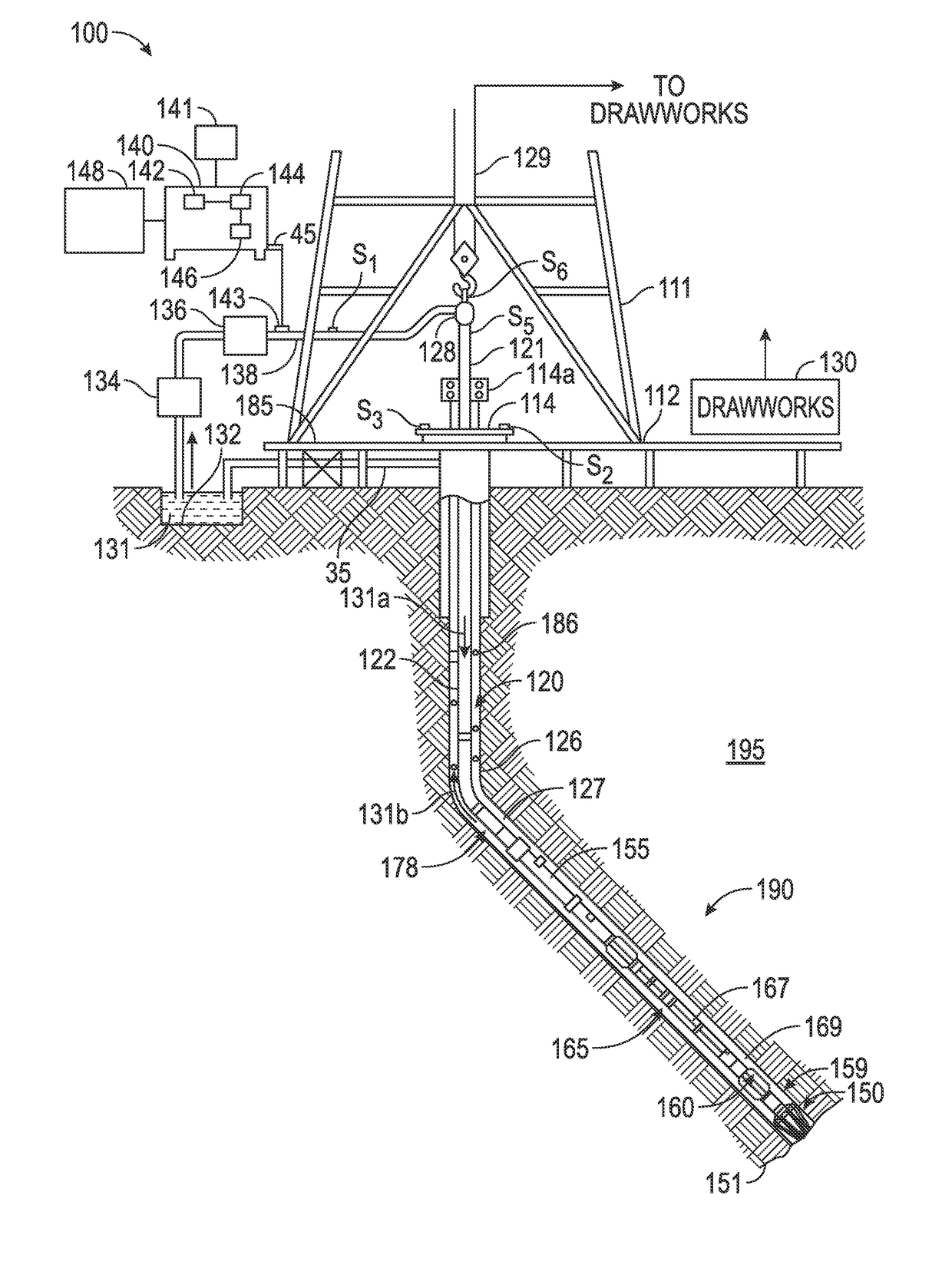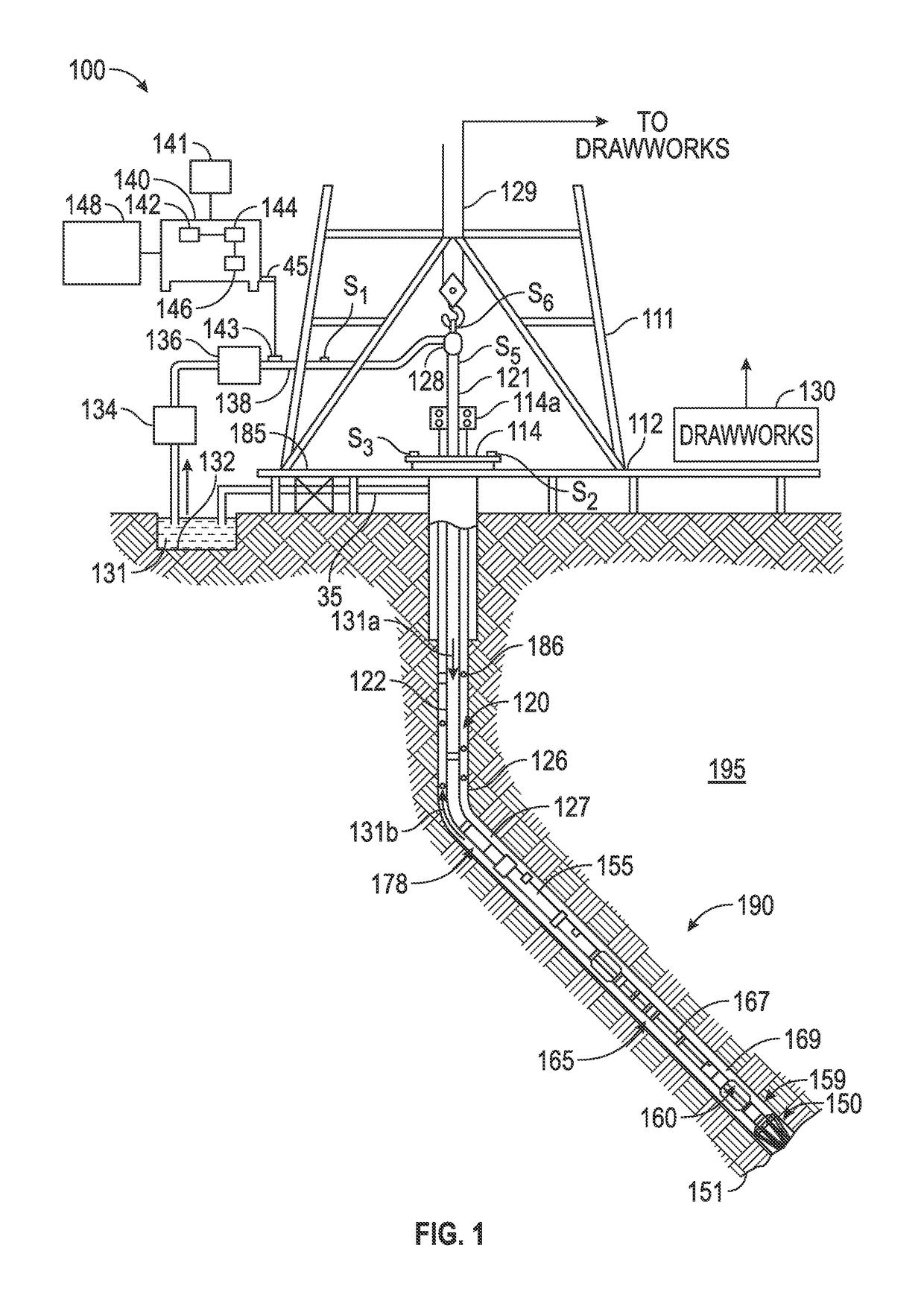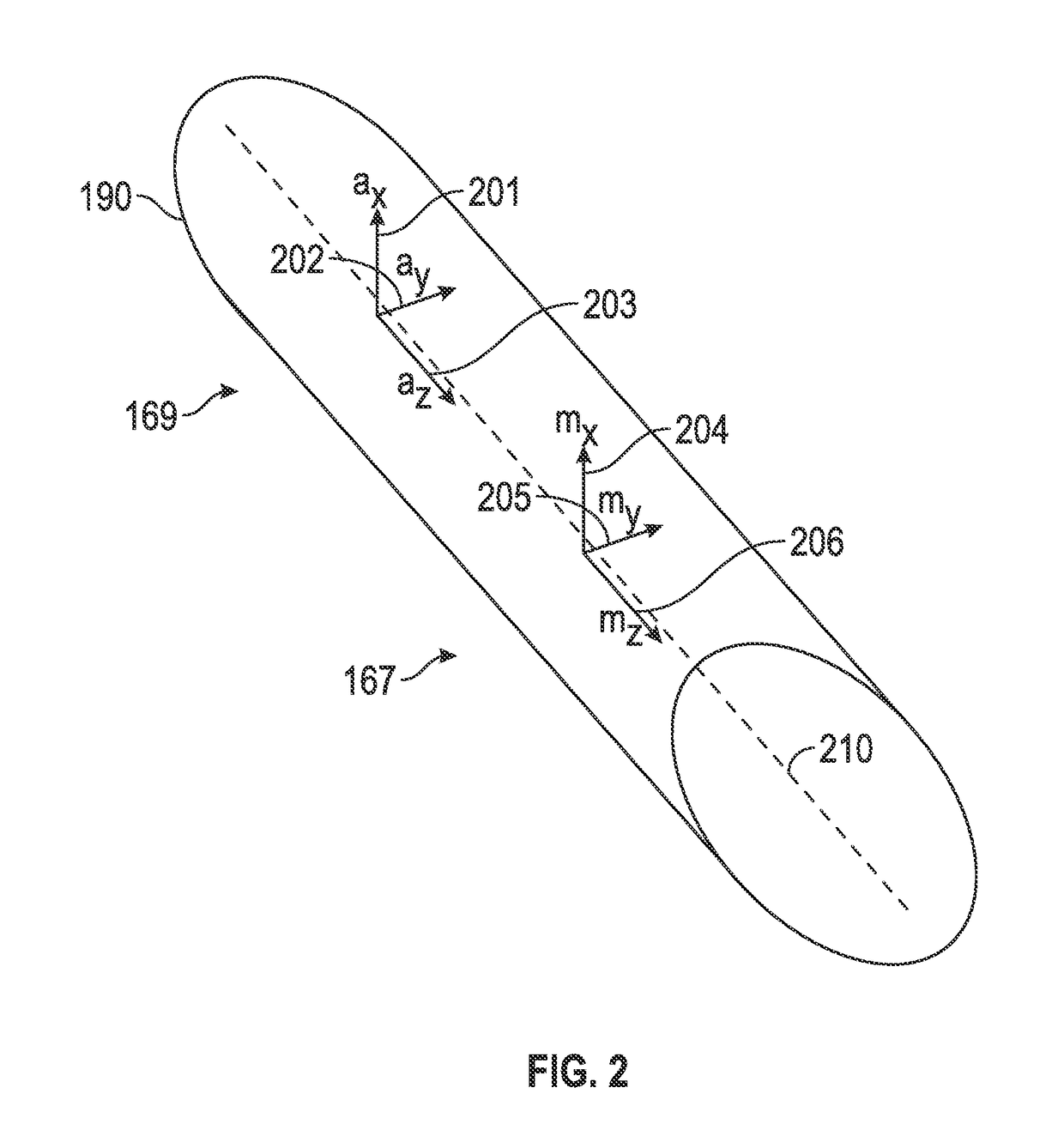Real-time, limited orientation sensor auto-calibration
a limited orientation and real-time technology, applied in the field of borehole magnetic measurements obtained, can solve problems such as degrading magnetometer data, and achieve the effect of reducing sensor configuration
- Summary
- Abstract
- Description
- Claims
- Application Information
AI Technical Summary
Benefits of technology
Problems solved by technology
Method used
Image
Examples
third embodiment
[0032]In the various methods of tool bias correction disclosed herein, the systemic sensor errors, such as a magnetometer bias or an accelerometer bias, may be determined to within a selected accuracy prior to applying the determined bias to correct magnetometer and / or accelerometer measurements. The present disclosure may include reducing the residual measurement error (tool bias) from a first value outside of a selected quality threshold to a second value that is within the selected quality threshold, using any of the methods disclosed herein. For example, in one embodiment, an Extended Kalman Filter may be used to obtain a magnetometer tool bias to within a selected threshold value. In another embodiment, a min-max method may be used to determine minimum and maximum values of magnetometer measurements during a complete revolution of the drill string, thereby allowing a tool bias correction based on minimum and maximum values. In a third embodiment, survey measurements obtained fr...
case 1
[0153 processes the entire data interval and estimates a constant component of the tool string's magnetic field for non-constant tool. This method determines all or most of the tool string magnetization. In Case 1 a largest valid data range is selected and processes over the entire selected interval as a single data set. Case 1 uses only one execution of the basic algorithm.
case 2
[0154 processes very short intervals, 1<t<<L, where L may be the number of data acquisition points over which an anomaly is observed, after the constant field component correction yields the time or spatially dependent magnetic disturbance. The length of the interval is generally greater than one data point, and may be determined by a log analyst and / or interpreter.
[0155]Case 2 selects a processing interval, e.g. 0.1 to 1 ft or longer. Shorter intervals will have higher resolution and higher noise. The interval will be processed according to the basic methods, steps described with respect to Eqs. (101)-(104) and the initial guess for a given interval will be the solution from the previously-determined interval. The intervals may be processed by stepping to an entirely new interval after convergence (or non-convergent exit) or a sliding solution may be developed where the next value is calculated by stepping along the data by one (or more) data points after each solution, producing a...
PUM
 Login to View More
Login to View More Abstract
Description
Claims
Application Information
 Login to View More
Login to View More - R&D
- Intellectual Property
- Life Sciences
- Materials
- Tech Scout
- Unparalleled Data Quality
- Higher Quality Content
- 60% Fewer Hallucinations
Browse by: Latest US Patents, China's latest patents, Technical Efficacy Thesaurus, Application Domain, Technology Topic, Popular Technical Reports.
© 2025 PatSnap. All rights reserved.Legal|Privacy policy|Modern Slavery Act Transparency Statement|Sitemap|About US| Contact US: help@patsnap.com



